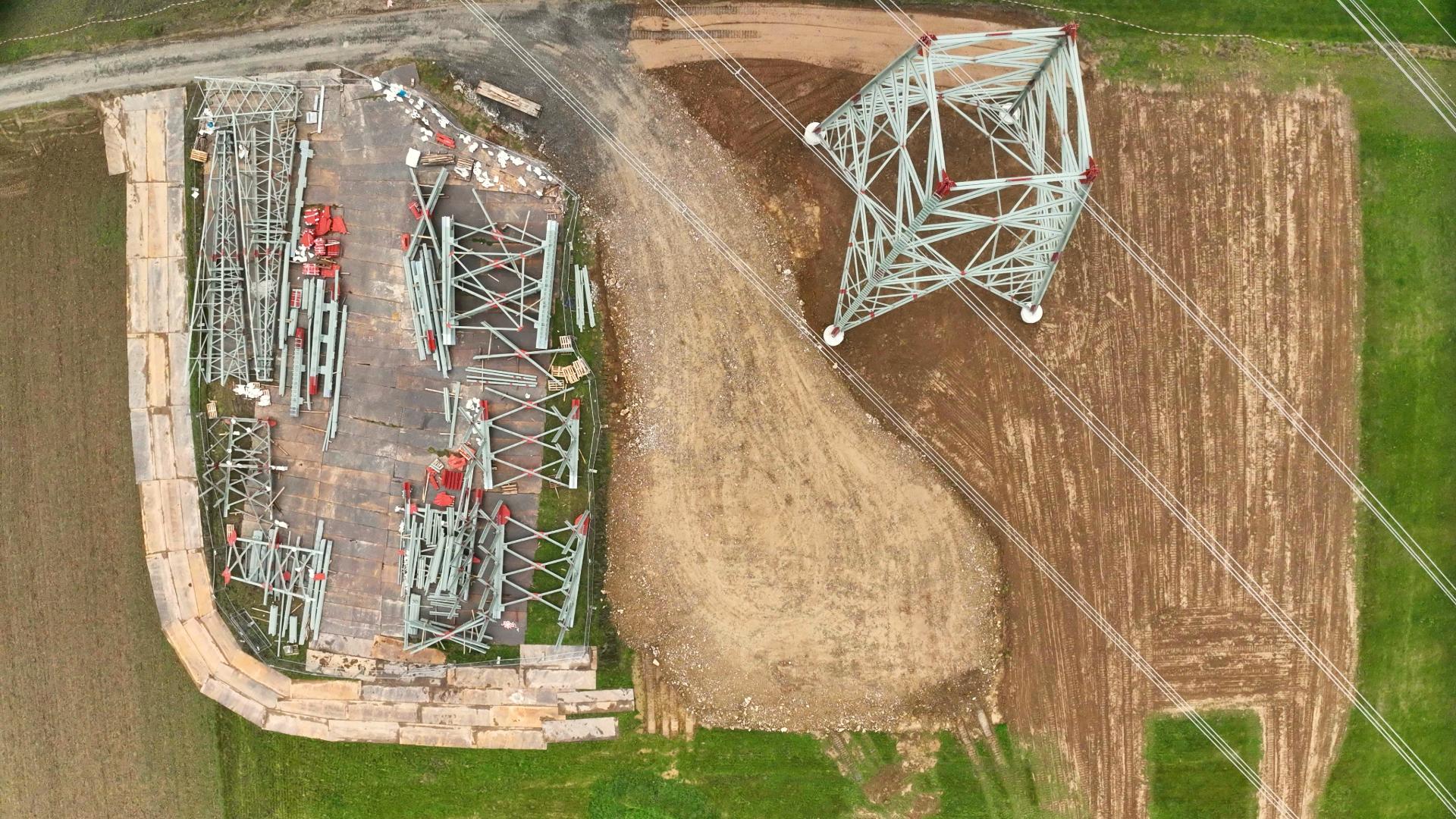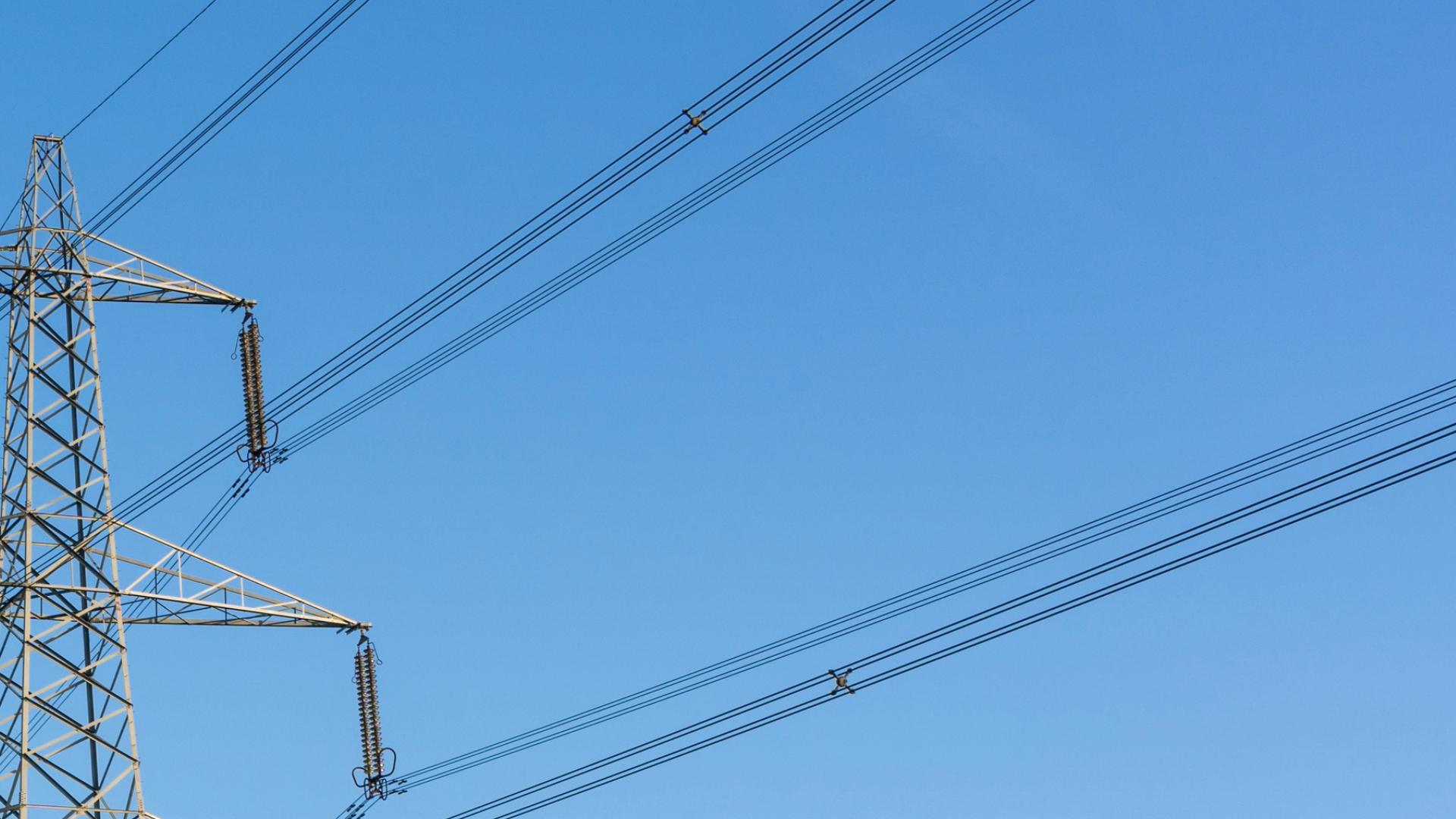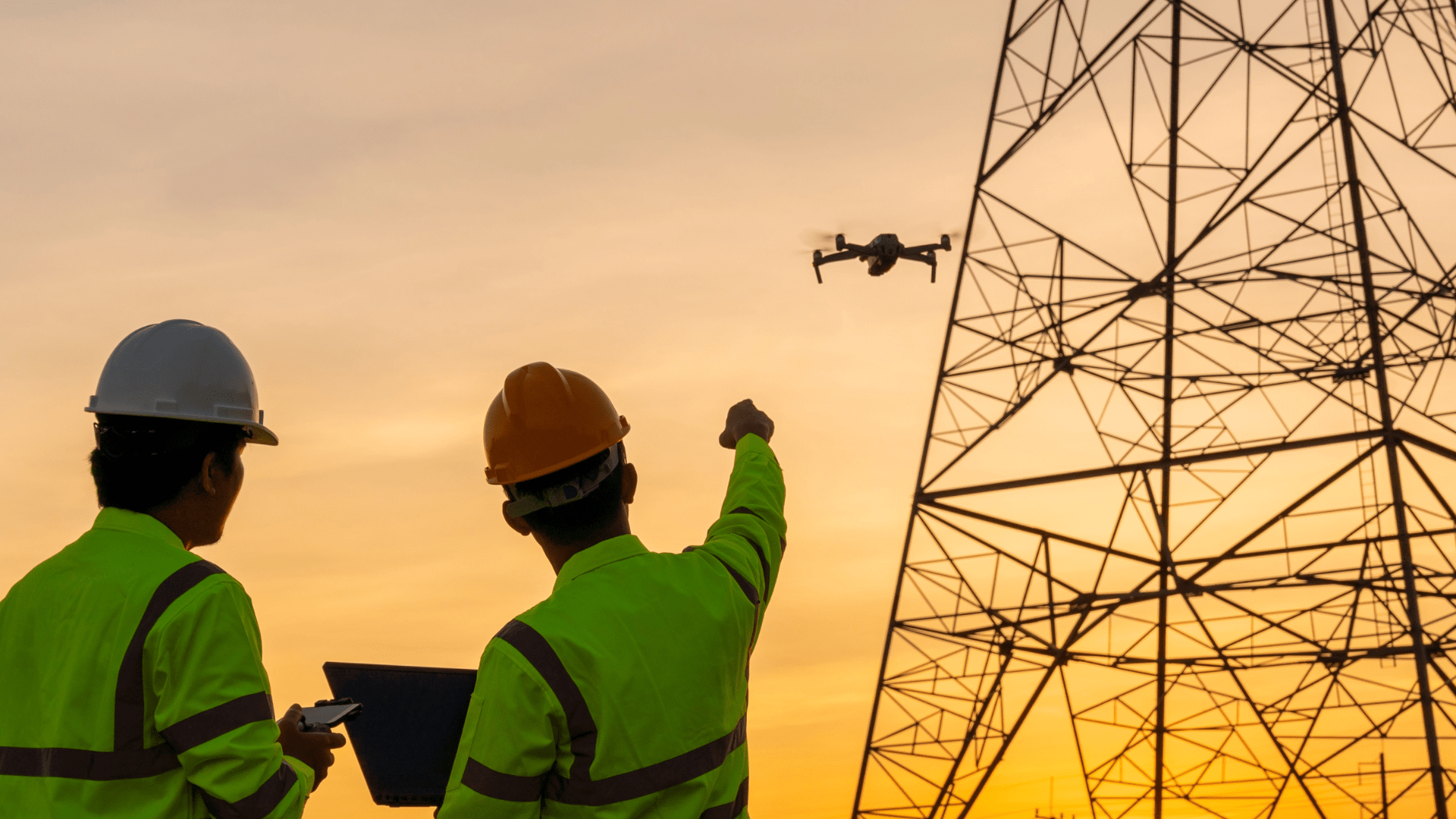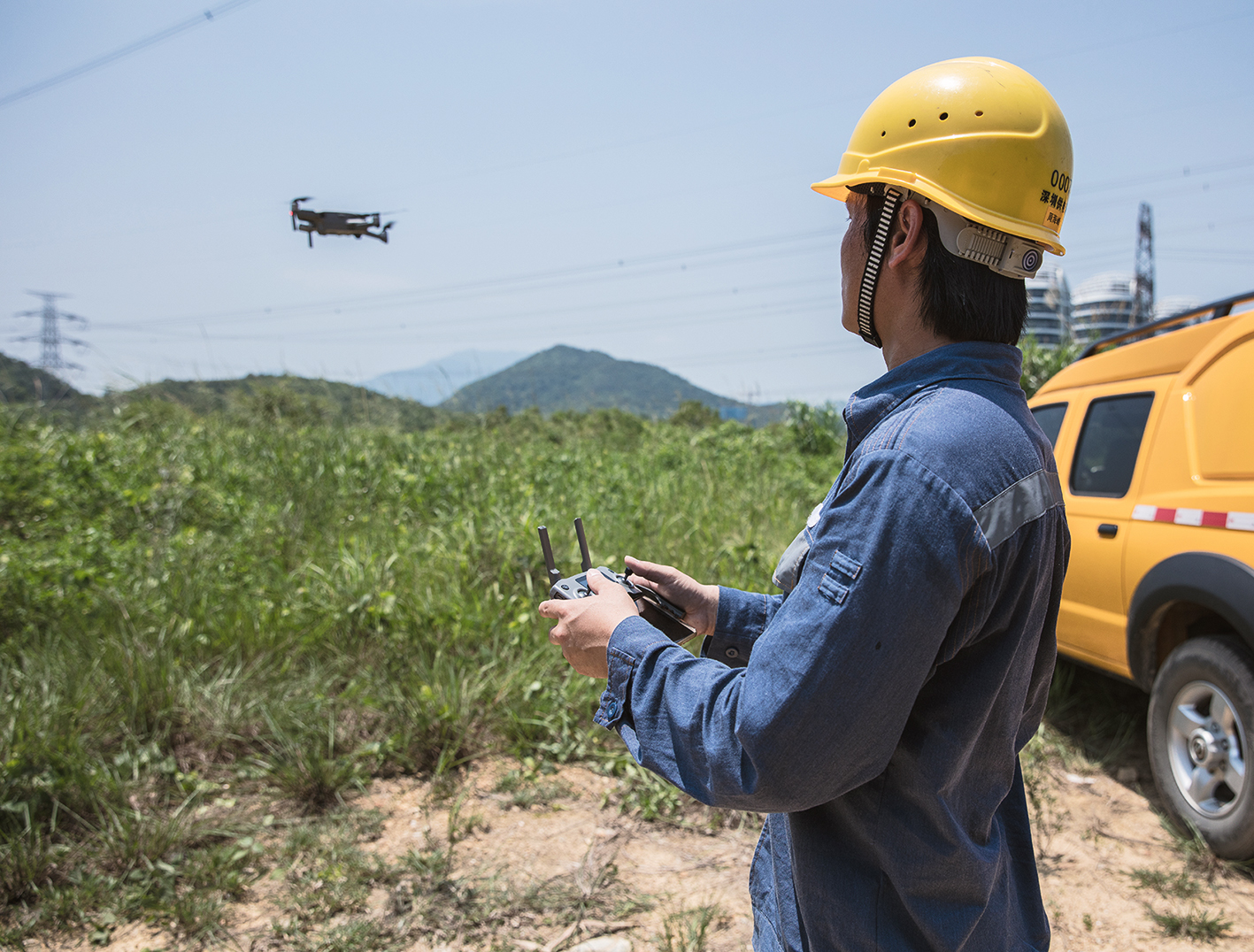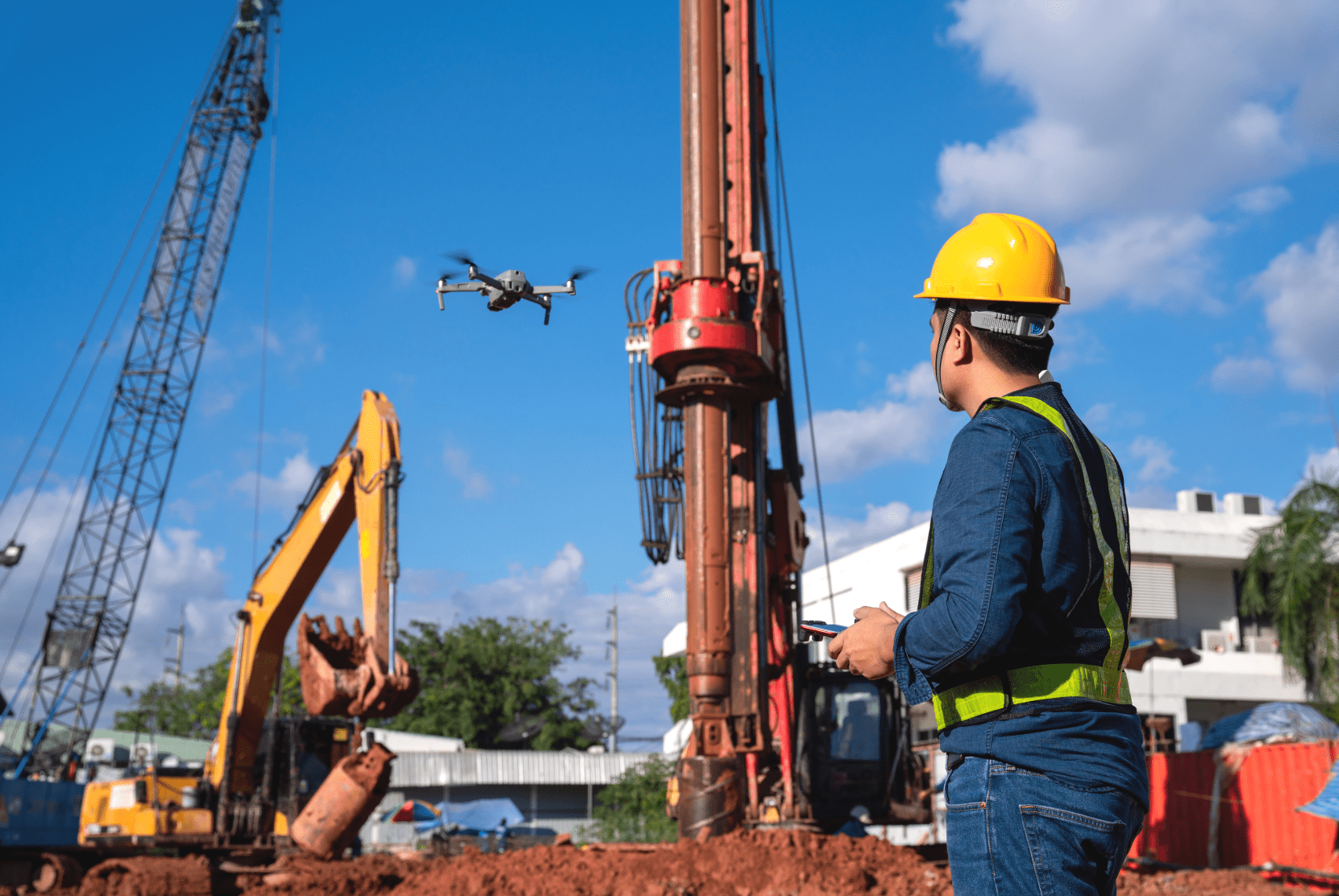Im letzten Teil unserer Blogserie zum Thema „Strafen für Drohnenpiloten“ greifen wir die Problematik, der in den Medien immer wieder erwähnten Drohnenflüge in Flughafenbereichen auf, wie es z. B. Ende Februar in Frankfurt der Fall war. Auch sprechen wir über das Fliegen über privaten Bereichen und was es hier in Bezug auf die Privatsphäre zu beachten gibt. Beide Fälle werden von allen Vergehen am stärksten geahndet, weshalb hier auch Freiheitsstrafen verhängt werden können.
Daher klären wir im Folgenden auf, was man über Flugverbotszonen, einschließlich Bereiche mit Menschenansammlungen, und das Fliegen über fremde Grundstücke wissen sollte. Abschließend haben wir alle Informationen in einer Checkliste zusammengefasst.
Falls Sie die ersten Teile dieser Blogserie zum Thema Strafen für Drohnenpiloten verpasst haben, können Sie diese hier nachlesen:
Fliegen in verbotenen Zonen
Zurzeit noch in § 21b LuftVO geregelt – nach der Gesetzesanpassung zukünftig in § 21h LuftVO (siehe S. 16) – , gibt es bestimmte Bereiche, in oder über denen das Fliegen verboten ist – sogenannte No-Fly-Zonen.
Für die Betriebskategorien „offen“ und „speziell“ sind folgende Gebiete verboten und folgende Abstände einzuhalten:
- Flugplätze mit Start- und Landebahn (bis 1.000 m seitlich, 5 km in An- und Abflugrichtung, Überflug verboten)
- Flugplätze ohne Start- und Landebahn (bis 1.500 m, Überflug verboten)
- Unfall- und Einsatzorte Polizei und Rettungskräften (bis 100 m seitlich und hoch)
- Militäranlagen (bis 100 m seitlich und hoch)
- Industrieanlagen (bis 100 m seitlich und hoch)
- Justizvollzugsanstalten (bis 100 m seitlich und hoch)
- Verfassungsorgane (bis 100 m seitlich und hoch)
- Fern- und Wasserstraßen, Bahnanlagen (bis 100 m seitlich und hoch)
- Naturschutzgebiete (kein seitlicher Abstand, Überflug verboten)
- Wohngrundstücke (kein seitlicher Abstand, Überflug verboten)
- Freibäder, Badestränden während der Betriebszeit (kein seitlicher Abstand, Überflug verboten)
- Krankenhäuser (bis 100 m seitlich und hoch)
Es gibt allerdings auch Ausnahmen. Diese gelten, wenn dem Betrieb ausdrücklich zugestimmt wurde. Ein Flug kann dann stattfinden, wenn Sie die Erlaubnis von Grundstücksbesitzern oder Krankenhäusern eingeholt haben (wie z. B. in unserem Projekt Medifly).
Wenn das Fliegen einer Drohne einen gefährlichen Eingriff in den Luftverkehr darstellt, da z. B. Kollisionsgefahr mit einem Flugzeug besteht, drohen laut § 315 StGB eine Geldstrafe oder eine Freiheitsstrafe (6 Monate bis 10 Jahre). Zudem kann auch mit 3 Punkten in Flensburg und der Entziehung der Fahrerlaubnis oder der Verhängung einer isolierten Sperre gerechnet werden.
Für die dritte Betriebskategorie „zulassungspflichtig“ gilt nach § 21c LuftVO Absatz 2, dass für Geräte dieser Kategorie, aufgrund ihrer technischen Komplexität und ihres Verwendungszwecks (z. B. Personentransport, Transport von gefährlichen Gütern), grundsätzlich die Verkehrsvorschriften für Flugzeuge gelten sollen.
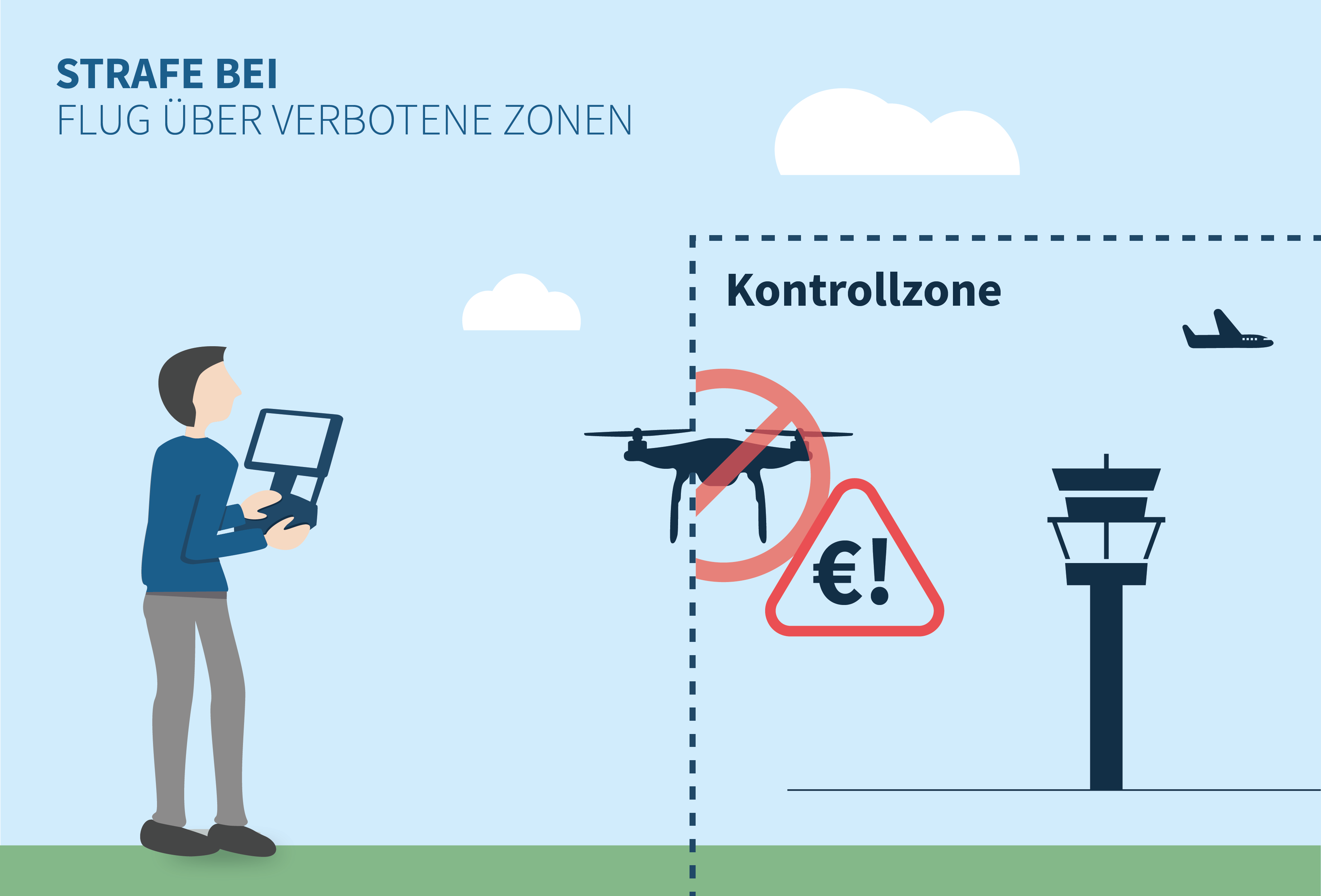
Um das unerlaubte Fliegen in No-Fly-Zonen zu verhindern, können mithilfe von Geofencing im Luftraum „virtuelle Käfige“ von solchen Bereichen geschaffen werden, in denen Geräte weder fliegen noch starten können. Die meisten Geräte haben diese Funktion bereits integriert. Das Projekt City-ATM, an dem auch FlyNex beteiligt ist, testet die Möglichkeit kurzfristige Flugverbotszonen, wie z. B. bei Feuer, zu schaffen.
Um zu erfahren, wo es Flugverbotszonen gibt, schauen Sie in unser Drohnenkarte „Map2Fly“ nach unter www.map2fly.flynex.de
Fliegen über Menschenansammlungen
Das Fliegen über Menschenansammlungen ist durch die verschiedenen Betriebskategorien bestimmt. Auch hier gilt für die Kategorien „offen“ und „speziell“ ein ausdrückliches Verbot für den Überflug von Bereichen mit Menschenansammlungen. In der Kategorie „speziell“ kann es unter Umständen Ausnahmen geben, die aber in jedem Fall eine Genehmigung benötigen.
Eine wirkliche Ausnahme bildet hier erneut die dritte Betriebskategorie „zulassungspflichtig“. Das Überfliegen von Menschenansammlungen ist hier erlaubt, wenn es sich um spezielle Geräte handelt, die so konstruiert sind, dass sie über Menschenansammlungen fliegen können (z. B. Flugtaxis).
Aber wie sind Menschenansammlungen überhaupt definiert? Leider gibt es keine offizielle Definition. Anleitungen der EASA versuchen sich mit dieser Definition: „Eine Menschenansammlung ist dann gegeben, wenn einzelne Personen sich nicht mehr so frei bewegen können, dass sie z. B. einem außer Kontrolle geratenen UAS beliebig ausweichen können.“
Beispiele sind:
- Sportgroßveranstaltungen, kulturelle, religiöse oder politische Events
- Strände oder Parks an sonnigen (gut besuchten) Tagen
- Einkaufsstraßen während der Öffnungszeiten
- Skipisten
In der Vergangenheit wurden in solchen Fällen 500 bis 1.500 € Bußgeld angeordnet und des Öfteren auch die Drohne beschlagnahmt.
Versuchen Sie Menschenansammlungen immer großzügig zu meiden, um keine Diskussionsgrundlage zu bieten. Zumal gefährden Sie keine Personen, falls sich Ihre Drohne aus unerfindlichen Gründen nicht mehr steuern lässt und abstürzt.
Fliegen über private Bereiche
Private Bereiche zu überfliegen ist ohne Erlaubnis verboten. Allerdings geht es in diesen Fällen meist weniger um das Fliegen als um die Aufnahme von Fotos und Videos von fremden Personen. Dabei wird jedoch nicht nur eine Ordnungswidrigkeit nach der LuftVO begangen, sondern vielmehr eine Straftat nach dem StGb, da es sich hierbei um die Verletzung der Privatsphäre handelt.
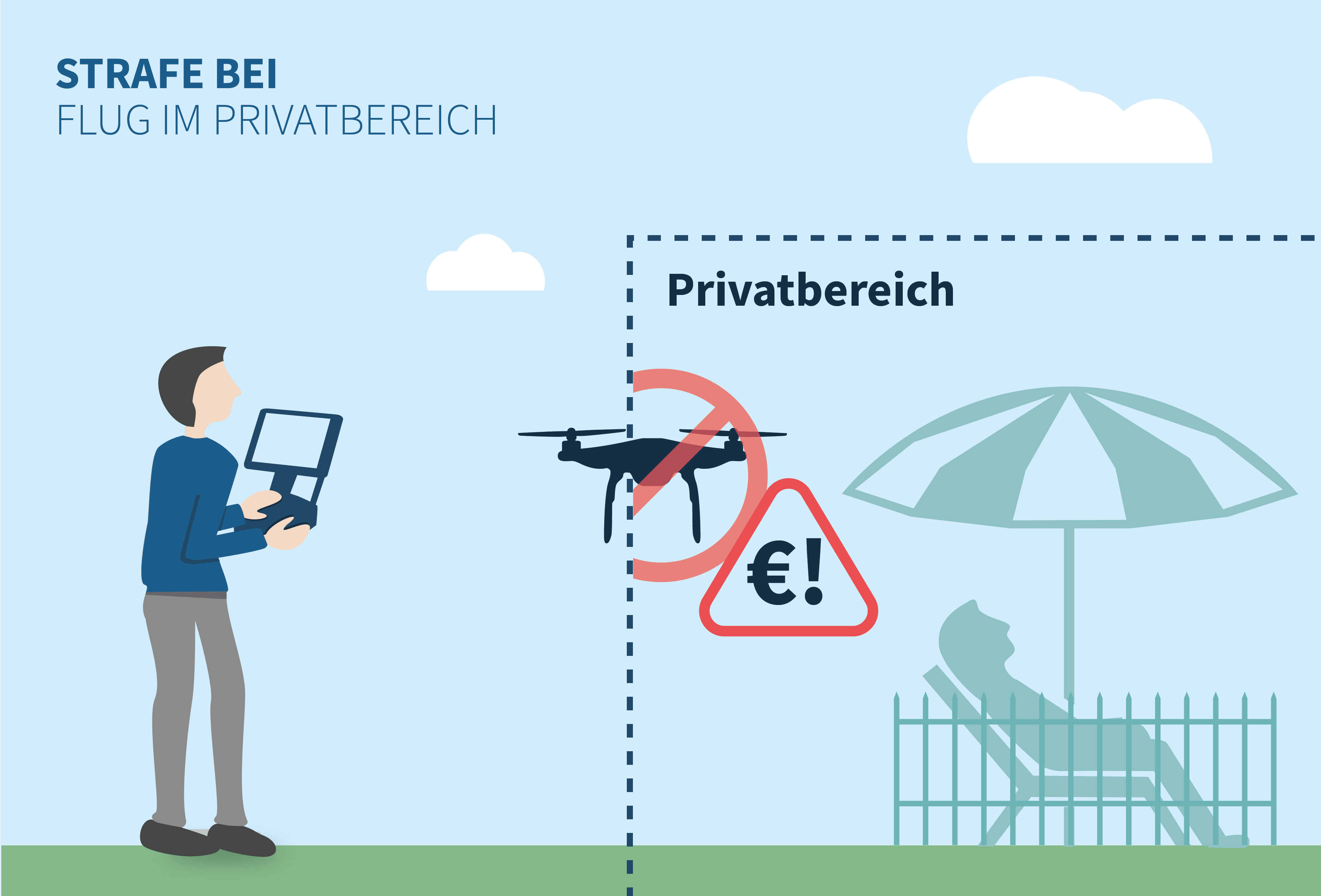
Zum einen bezieht sich dies auf die ungefragte Herstellung von Bildern einer sichtbaren und identifizierbaren Person und dessen privaten Bereiches. Zum anderen geht es um die Veröffentlichung dieser Bildaufnahmen.
In beiden Fällen wird gegen das allgemeine Persönlichkeitsrecht verstoßen und kann nach § 201a StGb mit einer Freiheitsstrafe bis zu zwei Jahren oder Geldstrafe bestraft werden. Das Recht am eigenen Bild unterliegt außerdem noch §§ 22, 23 des KunstUrhG und kann zu einer Freiheitsstrafe von bis zu einem Jahr oder Geldstrafe führen.
Falls der Betreiber der Drohne nicht ausfindig zu machen ist oder den Betrieb nach Aufforderung nicht unterlässt, ist der Grundstücksbesitzer nach § 228 BGB sogar berechtigt die Drohne abzuschießen, um die drohende Gefahr abzuwenden.
Um in diesem Fall keine Ordnungswidrigkeit oder im schlimmsten Fall eine Straftat zu begehen, sollten Sie immer die Erlaubnis der gefilmten Personen bzw. Besitzer der Wohngrundstücke einholen.
Checkliste: Was muss ich vor dem Flug beachten?
In allem wird deutlich, wie wichtig es ist sich vor dem Flug mit den geltenden Regelungen auseinanderzusetzen, da diese von vielen Faktoren abhängig sind.
Dieser Blogartikel war der letzte Teil unser Blogserie zum Thema Strafen für Drohnenpiloten (unter Berücksichtigung der aktuellen Gesetzeslage). Auf unserem Blog halten wir Sie regelmäßig zu allem, was in Verbindung mit der neuen Drohnenverordnung steht, auf dem Laufenden.
Bei Fragen können Sie sich gerne jederzeit an uns wenden! Wir helfen Ihnen gerne!
Wir wünschen sichere Flüge,
Ihr FlyNex Team
